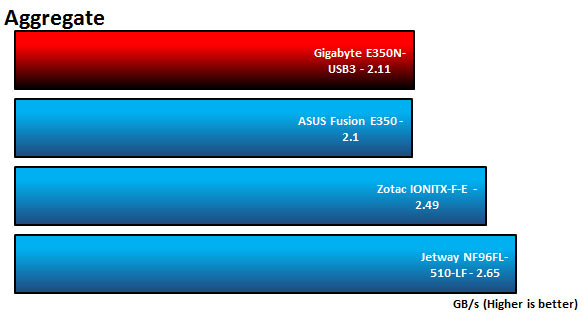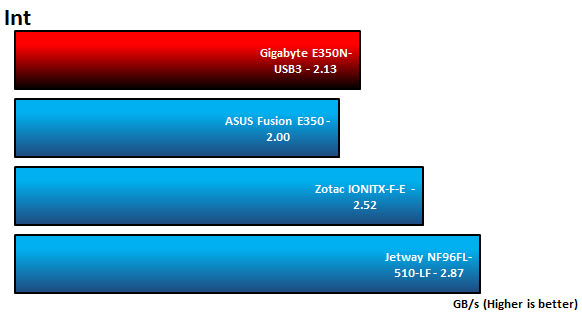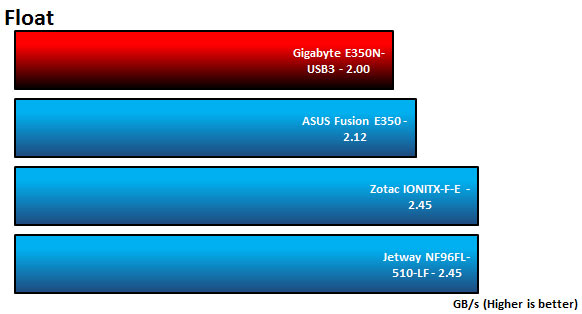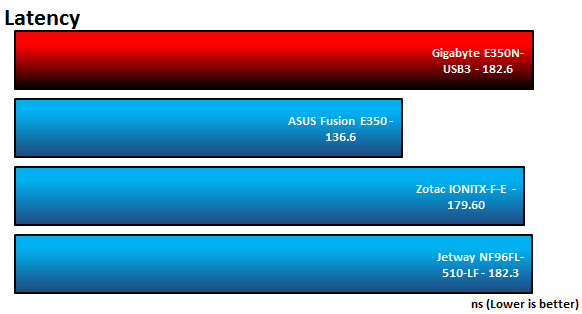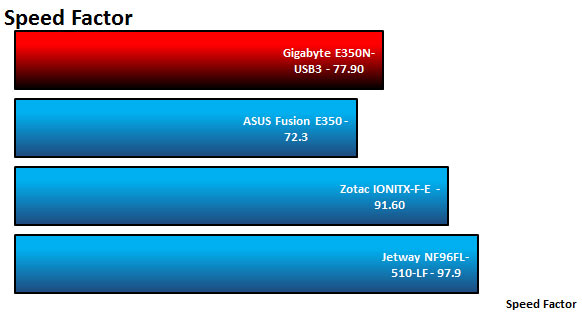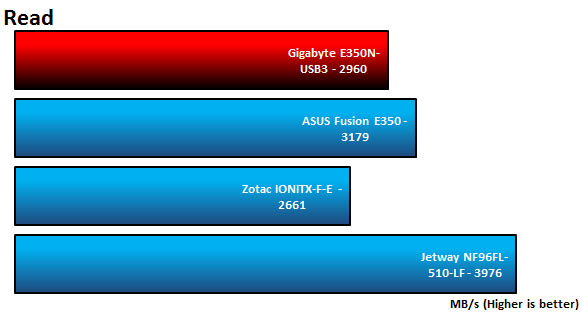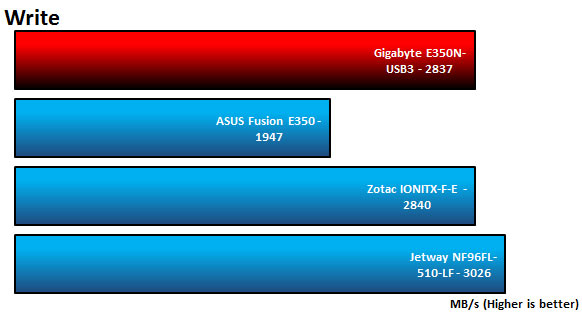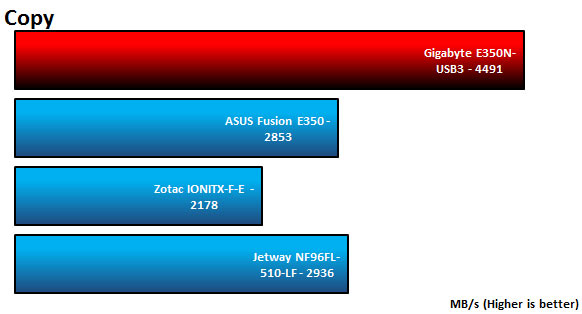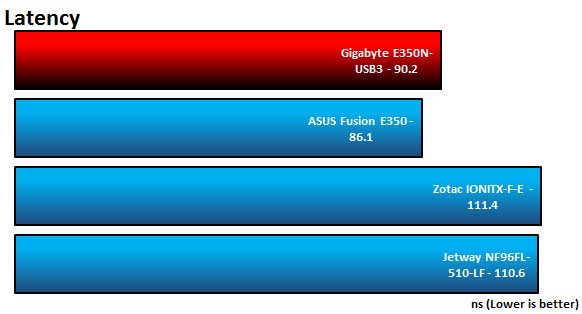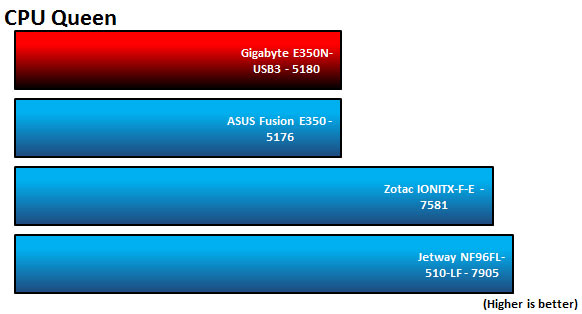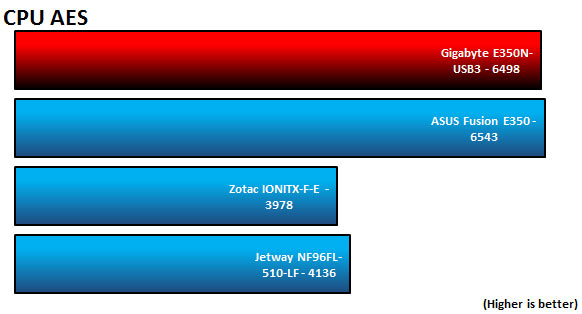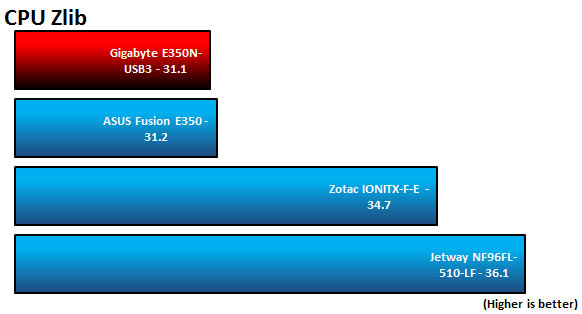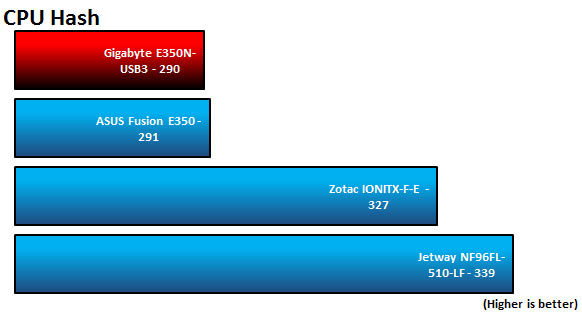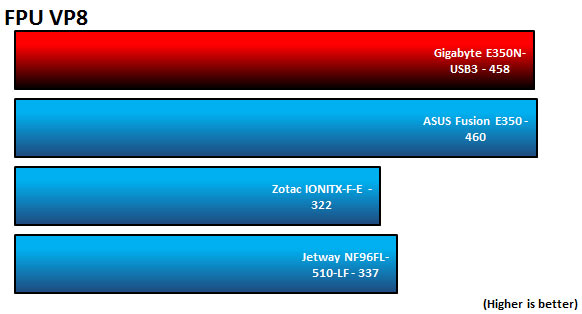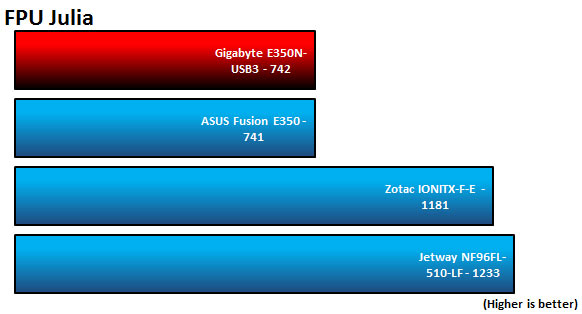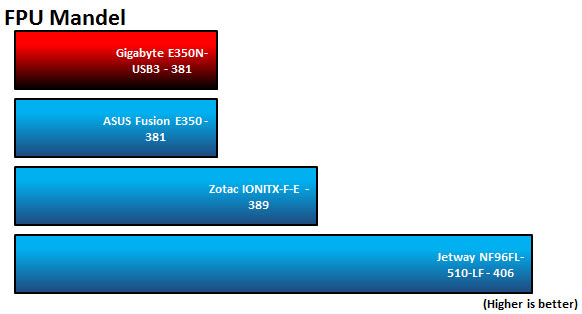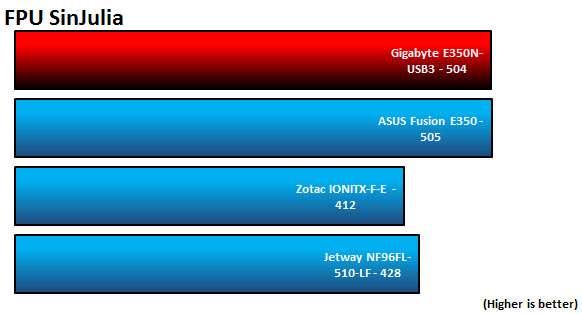Gigabyte E350N-USB3 AMD Fusion Mini-ITX Motherboard
Andy Ruffell / 13 years ago
A Closer Look
The board follows the same blue styling that Gigabyte are famous for and uses a Mini-ITX form factor.
Quite suprisingly, though the board uses the Mini-ITX size PCB, the board still manages to house the most vital components in full-size as opposed to using Mini ports etc…
The underside of the board shows off the turquoise PCB and shows the four mounting points for the heatsink.
The board is very low profile and the heatsink falls slightly below the height of the rear I/O connectors. This is perfect for users wanting to mount the board in a slimline style case, especially for HTPC purposes.
Cooling wise, the board features quite a small, slim heatsink which has a gun-metal grey individual fin design for the best heat dissapation. It also features a 40mm fan in the middle which i’m always a bit dubious about due to the days of having active cooling solutions on a Northbridge and slowly but surely they started to make a very high pitched whine. Hopefully this fan won’t see any of those problems, but just incase, we will see how the temperatures are effected when the fan is disconnected and removed as the main point of Fusion from AMD is how much power consumption it doesn’t require.
Underneath the chunk of metal reveals the AMD Hudson M1 chipset and Fusion E350 1.60GHz APU of which both chips are extremely small and therefore produce very little heat.
The board features two full-size memory slots which support s 2 x 1.5v DDR3 memory modules upto a maximum of 8GB. The supported speed is 1066 stock and 1333MHz when overclocked.
All motherboards feature plenty of headers for connecting the board to your chosen chassis. The connectors on this board are spread out nicely so that more can be fitted onto the board.
Near the memory module slots is where you will find the relevant front panel connectors for various switches and LEDs.
Near the back of the board is where the front panel audio header and SPDIF header is, which are conveniently situated behind the analog audio ports on the rear I/O panel.
Nearer the middle of the board are two USB headers which operate using USB 2.0/1.1 technology. Each header can provide up to two USB ports via your chassis or optional USB bracket. For the full USB 3.0 features, you would be required to loop back into the rear I/O.
There are two fan headers on the board, one for the CPU fan which already comes connected. The other is for a system fan and the header is situated by the front panel connectors.
Another header this board has included is for Chassis Intrusion. If your case supports this function as a lot of HTPC’s do, it will detect if the cases cover has been removed from the main part of the shell.
There are four SATA ports on the board which all support the latest Serial ATA 6.0Gb/s to give the very best functionality and speed.
As this board uses the Mini-ITX form factor and has integrated sound, LAN and graphics, there isn’t a mass need for plenty of expansion slots. Therefore only a single PCI-Express x16 (running at x4) slot is present which is perfect for the latest PCI-Express based TV card if you’re planning on using this board in a HTPC. The PCI-Express slot conforms to PCI-Express 2.0 standards.
Power consumption is something this board really doesn’t require a lot of, or any Fusion based board for that matter. You will still require the normal power connectors to be plugged in though. This includes the standard 24-pin ATX power connector, just in front of the front panel connectors and memory slots.
Also towards the top right corner (where it’s normally located) is a 4-pin power connector.
As a board like this is perfect for server use or more commonly HTPC purposes, a lot of people will be excited to learn about which connectivity options it includes on the rear I/O panel.
The board sports a modest 4 USB 2.0 ports but as the internal headers can branch a total of 4 more connectors via an optional USB bracket, that is nothing short of impressive. A combo PS2 mouse/keyboard port is also present, two USB 3.0 ports (shown by using the patented blue) which use the Renasas D720200 chip, a LAN port (10/100/1000 Mbit) which uses the expected Realtek 8111E chip, six analog audio ports as well as a S/PDIF out optical TOSlink port which uses the Realtek ALC892 codec for High Defintion audio, Dolby Home Theater and upto 7.1 channel sound and VGA, DVI and HDMI video connectivity options for the avid home theater media buff.
